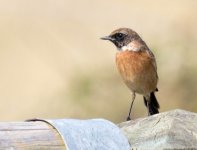I have a Canon 600d and a Canon 400mm f5.6 lens.
No matter how hard I try I just can't seem to get super sharp shots. These are from about 20 feet away and it's still pretty poor. Any advice with regards to what I'm doing wrong. They are 50% crops, I don't try with 100% any more.


Anything further away then that and I have no chance and the quality degrades even more. I can't work out if it's my lens or if my technique is appalling. I was looking at spending around £200 on a tripod (recommendations welcome) but I was told that would make no difference to my performance.
No matter how hard I try I just can't seem to get super sharp shots. These are from about 20 feet away and it's still pretty poor. Any advice with regards to what I'm doing wrong. They are 50% crops, I don't try with 100% any more.


Anything further away then that and I have no chance and the quality degrades even more. I can't work out if it's my lens or if my technique is appalling. I was looking at spending around £200 on a tripod (recommendations welcome) but I was told that would make no difference to my performance.




